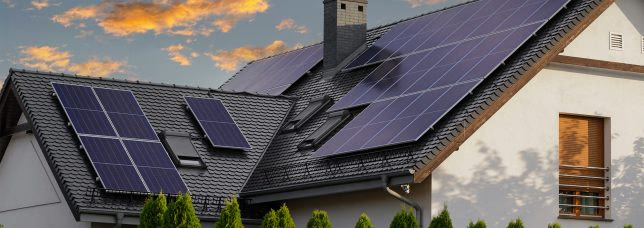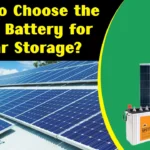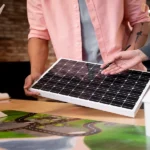Solar energy is fast becoming the future of power in India. With government support, falling prices, and increasing awareness, more people are turning to solar panels for homes and solar rooftop systems. However, many still hesitate—mostly due to common myths.
In this article, we bust the top 10 myths about solar energy using facts. If you are considering installing solar panels at home or in your business, this guide is for you.
Myth 1: Solar Doesn’t Work During Cloudy or Rainy Days
Fact: Solar panels don’t need full sunlight to work. They need daylight, which is still available on cloudy days. During monsoons, solar energy production may reduce, but it doesn’t stop.
Modern solar panel technology is designed to work even in low-light conditions. For most Indian cities, solar remains effective year-round—even in places like Kerala and Assam.
Myth 2: Solar Energy Is Too Expensive
Fact: The price of solar panel systems has dropped by over 80% in the last decade. With government subsidies like the PM Surya Ghar Yojana, residential solar systems are now affordable.
In India, you can recover your cost in 5 to 7 years. After that, you enjoy free electricity for 15–20 years. Some banks also offer low-interest loans to help with installation.

Myth 3: Solar Panels Require High Maintenance
Fact: Solar panels are low-maintenance. A basic cleaning once every 2–3 weeks is enough in dusty areas. You don’t need to service them every month.
Most manufacturers provide 20–25 years of warranty on panels. Inverters and batteries (if used) may need replacement once in 8–10 years.
Myth 4: Solar Panels Can Damage the Roof
Fact: Professional installation protects your roof. Panels are mounted using safe methods that do not harm tiles or structure. In fact, they shield your roof from direct sun and rain, which may increase its life.
A proper site survey ensures that your solar rooftop system is safely designed for your roof type—whether concrete or metal.
Also Read Build Your Own Mini Solar Generator in India: Step‑by‑Step Guide
Myth 5: Solar Can’t Run Heavy Appliances
Fact: This is not true. A well-designed solar power system can run heavy-duty appliances like refrigerators, water motors, geysers, and even air conditioners.
You only need to size your solar system correctly. For example, a 5 kW system can handle most average home appliances comfortably.
Myth 6: You Need Batteries to Use Solar
Fact: Not always. Most urban homes in India use on-grid solar systems. These systems are connected to the power grid and work without batteries.
They send excess power to the grid and draw power at night. If you want backup during power cuts, you can opt for hybrid solar systems with batteries.
Myth 7: Solar Is Not Reliable
Fact: Solar is now one of the most reliable energy sources. Panels have no moving parts, so failure chances are low.
With a grid-connected system and a smart inverter, your solar setup gives stable and consistent power. Some people also install batteries or diesel backup for emergencies.
Myth 8: Solar Only Works in Hot Areas
Fact: Solar works on light, not heat. Very high temperatures can actually reduce panel efficiency.
That means areas like Himachal Pradesh or Shillong, which receive good sunlight but moderate temperatures, can also benefit from solar installations.
Myth 9: Solar Makes It Harder to Sell Your Property
Fact: This is outdated thinking. A home with solar is more attractive today. Buyers prefer energy-efficient homes with low electricity bills.
In some areas, adding solar even increases the resale value of your property.
Myth 10: Solar Technology Will Become Obsolete Soon
Fact: Solar technology is constantly improving, but today’s systems are highly advanced. Waiting for newer models means losing out on years of savings.
Plus, systems installed today are upgradeable, and panels come with long warranties. Start now and benefit from solar savings today.
Why It’s Time to Switch to Solar in India
India is blessed with over 300 sunny days a year. Whether you live in a city, village, or industrial zone, solar energy in India makes financial and environmental sense. Here’s why:
- Low electricity bills
- Government subsidies
- Clean, renewable energy
- Reduced carbon footprint
- Energy independence
- Low maintenance
Common Questions About Solar Energy
Q1. How much does a home solar system cost in India?
A: A 1 kW system costs ₹45,000 to ₹60,000 (before subsidy). For a 3 kW setup, it may cost around ₹1.5 lakh. After subsidy, this can drop to under ₹1 lakh.
Q2. Will my solar system work during power cuts?
A: Only hybrid or off-grid systems with batteries work during outages. Grid-tied systems shut off for safety during power cuts.
Q3. Is solar good for apartment buildings?
A: Yes, but it depends on shared roof space and approvals. Many housing societies now install solar rooftop systems for common lighting or lift power.
Q4. What government subsidy can I get?
A: Under PM Surya Ghar Yojana, homeowners can get up to ₹78,000 in subsidies for 3 kW systems.
Q5. How long do solar panels last?
A: Most panels last 25 years or more. Inverters may need replacement after 10 years.
Final Thoughts: Don’t Let Myths Stop Your Solar Journey
Solar energy is no longer the future—it’s the present. Myths around cost, reliability, and performance often stop Indian families from going solar. But the truth is simple: solar is reliable, affordable, and clean.
If you own a home or run a business, installing a solar system is one of the smartest decisions you can make in 2025. Don’t wait—start saving on your electricity bills and help India move toward a sustainable future.
Let the sun power your life—myth-free!










